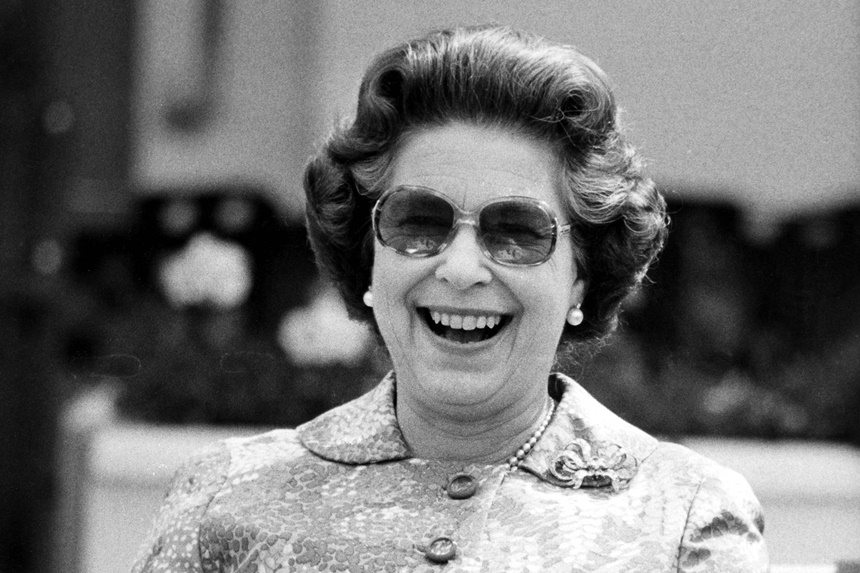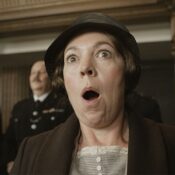Portrait of the Queen
⭐️ ⭐️ ⭐️
Run Time: 1 hour 20 minutes
Writer: Paola Calvetti
Director: Fabrizio Ferri
Available on Video on Demand
The argument can be made that Queen Elizabeth II was the most-photographed human in history. And it may well be true: Seventy years as a worldwide celebrity who also happened to be a head of state can do that.
This new documentary, featuring interviews with a handful of top lensmen who served as official portrait photographers to Her Majesty, addresses the central irony of QE II’s reign: At a time when she was among the planet’s most visible people, she was also one of the least knowable.
Even though royal portraits are painstakingly staged and, almost by definition, phony, is there some manner in which they can offer a window into the actual person behind the pomp and circumstance? Director Fabrizio Ferri seems to think so, and here he spends nearly an hour-and-a-half making his case.
Ferri never quite proves his point, but his is an intriguing investigation, nevertheless.
Along the way we meet some engaging visual artists, starting with the guy who was tapped to snap the Queen’s coronation portrait, plopping her down in front of a hopelessly fake-looking Westminster Abbey backdrop and trying to make her look comfortable holding an unwieldy gold scepter in one hand and a heavy gold globe in the other. It’s actually a pretty funny story, told with panache by the film’s narrator, the veddy English actor Charles Dance.
Then follows a parade of photographers, each with a unique take on what it was like to point a camera at the Queen, each trying to find some way to capture her royal essence. One explains how, each time he asked the Queen to smile, she seemed to get more frowny (until an aide whispered in his ear that Her Majesty smiles only when she feels like it…not when she’s told to). Another recalls trying to accomplish a hybrid candid/portrait image, and in so doing went for a walk with the Queen and her corgis. Somewhere on a Scottish trail, she let out a piercing whistle to summon a pair of wandering horses.
The film’s most intriguing passage involves a 2010 shoot at Scotland’s Balmoral Castle, where photographer Julian Calder mounted a monumental effort to capture Elizabeth in her role as the Queen of Scots, resplendent in the regalia of the Most Ancient and Most Noble Order of the Thistle. There she stands, heather at her feet, a roiling brook echoing the flow of her purple robe — and, occupying the upper half of the image, a blanket of roiling gray clouds, which neither the queen nor the photographer would ever suggest reflects the fraught relationship between the British Crown and the Scots (see: Braveheart).
Your faithful film critic happens to be someone who has spent a good deal of his career in the company of professional photographers, and that makes Portrait of the Queen especially fun for me. I’ve always been a word guy, yet I’ve long envied most photographers’ ability to tell engaging, frothy stories of their adventures (and frequent misadventures). That seemingly congenital storyteller trait is in evidence throughout the film as the photographers throw their heads back and regale the filmmaker with one ripping yarn after another (Ferri seems to have followed the tack I would have advised: Do not ruin things by fact checking any of them).
Still, a jolly good raconteur does not a unified film make: For all the interesting tidbits and accomplished photography on display, the film never really settles into answering its central question: Who was Queen Elizabeth, as revealed in her official portraits? The photographers all come away with the well-defined impression that Queen Elizabeth was, at her core, a pro; a master at giving the people what they wanted and masking her own takes on the matter.
Fair enough. The only problem is, we already knew that.
Become a Saturday Evening Post member and enjoy unlimited access. Subscribe now




Comments
Thanks for notifying us about this film. I’ve seen enough actresses portraying Queen Elizabeth ll, but they are not she. This is the real deal, and I’m looking forward to seeing it. She did mask her own takes on matters which is why she was/is so beloved. The Queen truthfully did a ‘high-wire’ act, conducting herself in a no margin for error manner.
Being on a pretty short leash, she successfully combined the toughness the role required, with being the gracious, friendly/smiling Queen we love and miss on this one year anniversary of her passing.